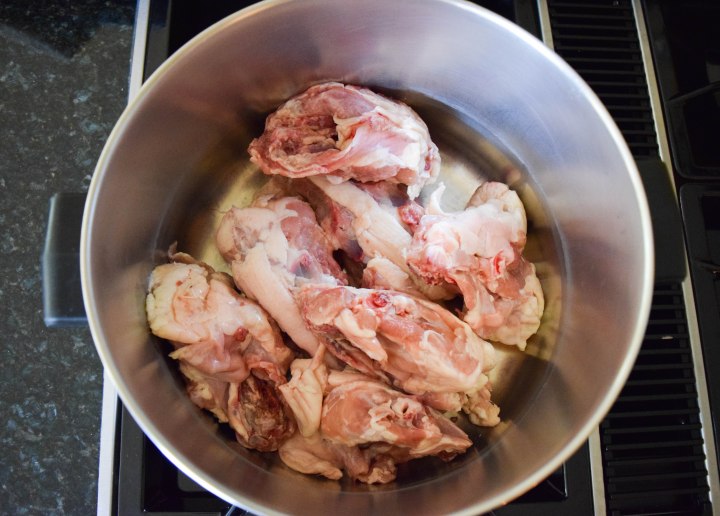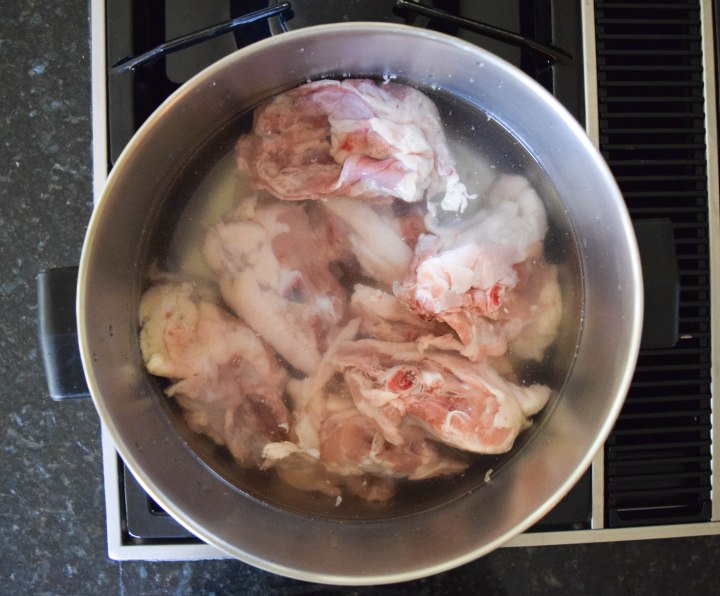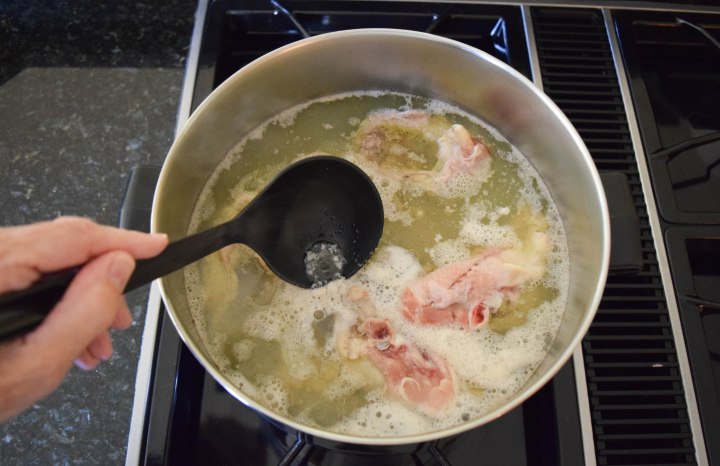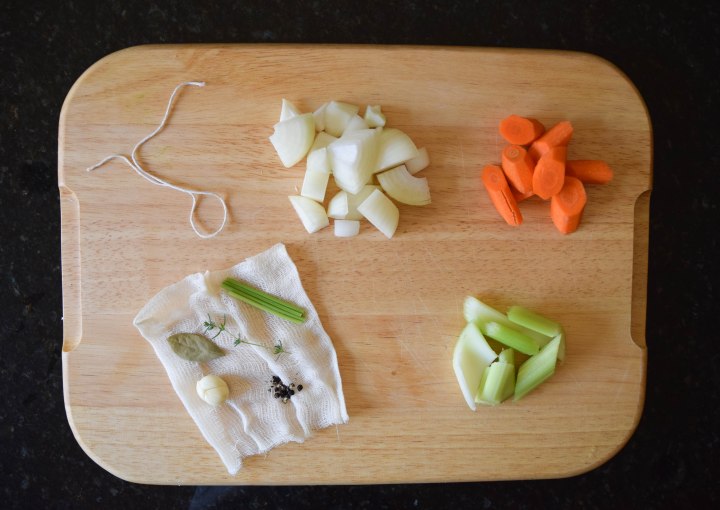As a culinary student, I felt like my life revolved around stock. Chicken, beef, vegetable, seafood. Every morning in fundamentals class we’d make it. The halls of my school smelled like it. At random, chefs would scream at you, “WHAT’S THE RATIO FOR CHICKEN STOCK??” and you’d try not to piss your pants from nerves. One chef even threatened to put me in the stock pot. For two years it was stock, stock, stock. Everybody!!
So you could imagine my embarrassment and disgust, when recently my mother asked me “How do you make homemade chicken stock,” and my response was, “D’uhhh..um…you…well…”
Was I losing my grip on cooking? Had my transition from pastry chef to chef assistant come with the consequence of forgetting my training? My new job is a cush gig, but I miss being in the kitchen. I miss smelling like cooking gas and onion, the stiff, bleach-perfumed whites, the dry hands, the red cheeks, the not-so-delicate stream of sweat constantly flowing from my neck to my ass. I miss being nervous and on edge.
Sometimes I dream I’ll return to the beast. Sometimes I try to convince myself I can work on Christmas and not cry in the walk-in because I miss my family. That sleep, dating, and general physical well-being don’t matter to me. But they do. So for now, I am working another angle.
While my kitchen days might be on the back burner (YES THAT WAS INTENTIONAL), I am not ready to let go of that endless knowledge of ratios, ingredients, cooking temps and times, snotty French phrases, and the obnoxious desire to say “behind!” even when it’s just me and mom in the kitchen.
So I went back to basics, let’s call it a kitchen comeback, a retraining. Just because I wear blazers and work a desk – doesn’t mean I can’t cook the pants off someone, slay a dinner party. It doesn’t mean I can’t nurture that nagging curiosity that brought me to cooking in the first place.
So here’s my reboot. Chicken Stock – Culinary School style – although of a much smaller quantity. Make it, use it in everything, let the chef in you shine!

Making stock is so easy it’s ludicrous. Let’s begin. Put your bones in a large stock pot.

Cover ’em with water and bring to a simmer.

While the chicken stock is simmering you gotta skim. Using a ladle remove, what I affectionately call, the “scudzzz.” It’s the greasy bits, the foamy parts – get rid of it.
If you need to add a little bit of water to replace what you’ve removed, do so now.
Let stock simmer for three hours.

In between, de-scudzzings, make your mirepoix and sachet d’espices. You’ll add this at hour 3 of simmering.

Once the stock has simmered for 3 hours, add the sachet and the mirepoix. Allow the stock to simmer for one hour more, continuing to de-scudzzzz every so often.
After the stock has cooked for a total of 4 hours, remove it from the heat. Strain the stock through a fine mesh strainer and a layer of cheese cloth. Place in an ice bath and cool completely before storing.
Oh? Where’s the final product photo? The awkward picture with photos of ex-boyfriends and odds and ends you don’t understand anyways?
Newsflash people – this isn’t a finished product! Well it is and it isn’t. This beauty can become so many things! It’s a great base for soups, sauces, use it in your rice, make glace, do whatever you want with it! It’s delicious!
Chicken Stock
Ingredients:
4 # chicken bones
1/2 mirepoix (4oz onion, 2oz carrot, 2oz celery)
1 sachet d’espices (3-4 parsley stems, 1 sprig thyme, 1 bay leaf, 1/2 tsp cracked black peppercorns, 1 clove of garlic, wrapped in a piece of cheese cloth and tied with twine)
2.5 to 3 quarts cold water (enough to cover the bones)
Directions:
Place the chicken bones in a large stock pot and cover with cold water. Bring the bones to a simmer.
Let bones simmer for 3 hours, while skimming the greasy pockets and foam.
After three hours, add the mirepoix and the sachet.
Simmer for an additional hour. Continue to skim.
After four hours, strain the stock through a fine mesh strainer that has a piece of cheese cloth in it.
Chill the stock in an ice bath until completely cool, cold even.
Place in quart containers and transfer to the fridge. Stock should last for a week.
If you aren’t planning to use it immediately, you can store it in the freezer for months.
